what do your Nails say about your health?
Your nails are not just cosmetic accessories; they can provide valuable insights into your overall health. Changes in nail color, texture, or shape can be indicative of underlying medical conditions, ranging from mild nutritional deficiencies to more serious health issues.
Nail Color Changes:
Pale Nails:
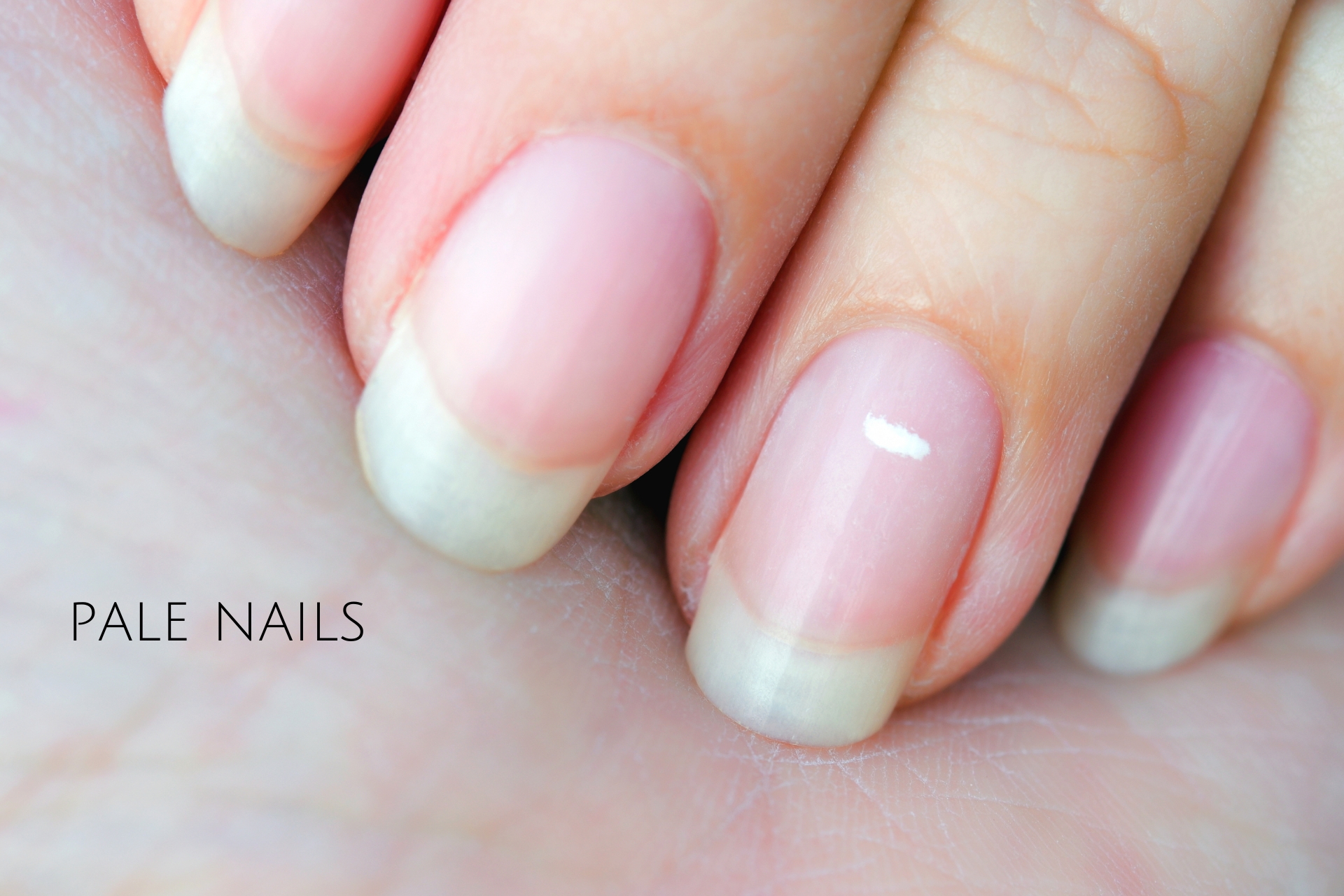
Pale nails, also known as leukonychia, are a common condition characterized by a partial or complete loss of the normal pink color of the nails. The nails may appear white, milky, or porcelain-like. Leukonychia can affect one or all nails.
Causes of Pale Nails:
Pale nails can be caused by a variety of factors, including:
Trauma: Injury to the nail bed, such as hitting your finger, can cause white spots or patches to appear on the nails. These spots are usually harmless and will eventually grow out.
Nutritional deficiencies: Iron deficiency, zinc deficiency, and vitamin B12 deficiency can all contribute to pale nails.
Medical conditions: Certain medical conditions, such as anemia, kidney disease, and heart disease, can also cause pale nails.
Yellow Nails:
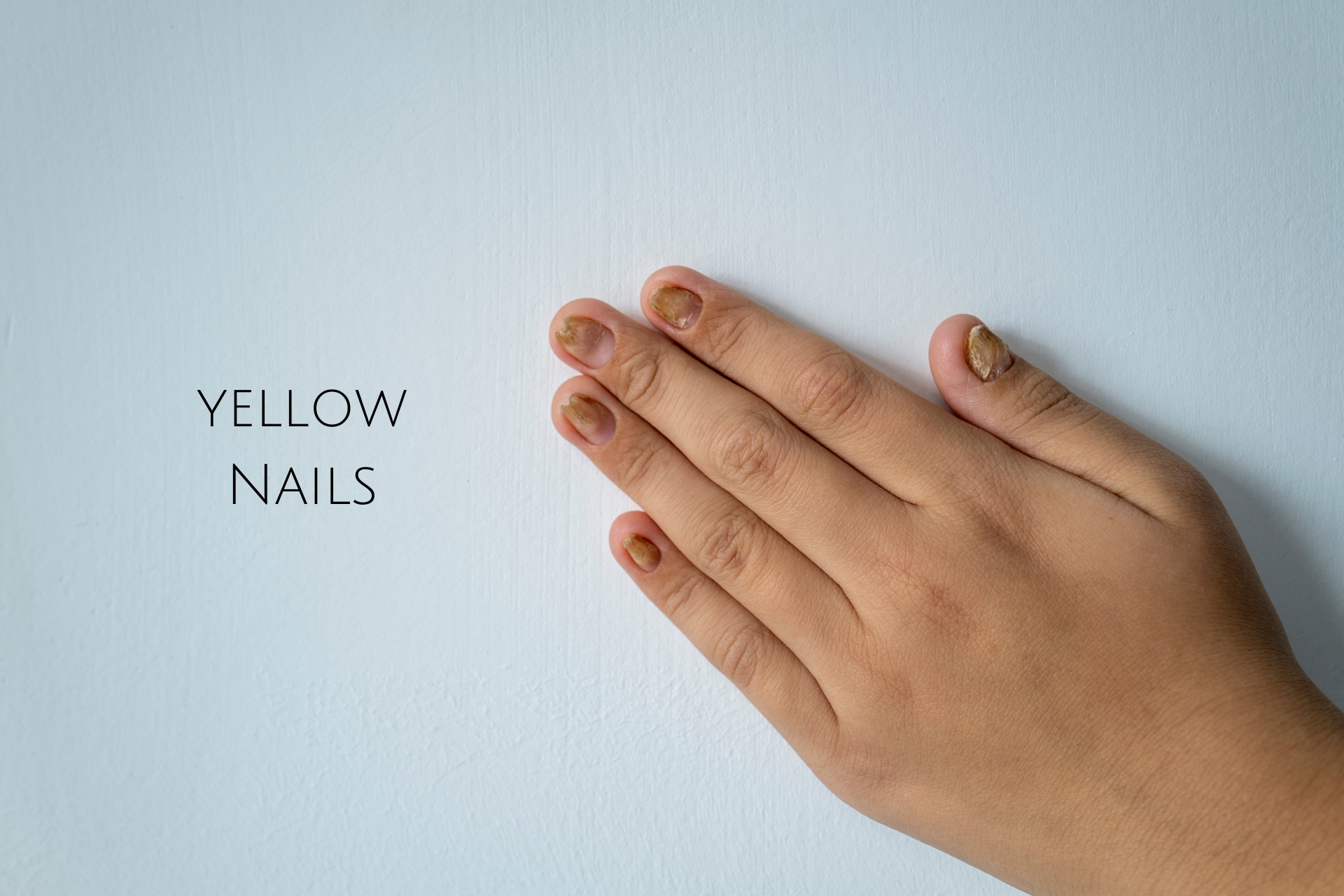
Yellow nails, also known as onychomycosis, are a common condition that affects both fingernails and toenails. It is caused by a fungal infection, typically Trichophyton rubrum, which thrives in warm, moist environments.
Causes of yellow Nails:
The fungus typically enters the nail through a small crack or injury in the nail plate. Once inside, it begins to grow and spread, causing the nail to thicken and yellow.
Psoriasis: Psoriasis is an autoimmune skin disease that can also affect the nails.
Lichen planus: Lichen planus is another autoimmune skin disease that can affect the nails.
Medications: Certain medications, such as tetracycline and hydroxychloroquine, can also cause yellow nails as a side effect.
Nutritional deficiencies: Iron deficiency, zinc deficiency, and vitamin B12 deficiency can also contribute to yellow nails.
Blue Nails:
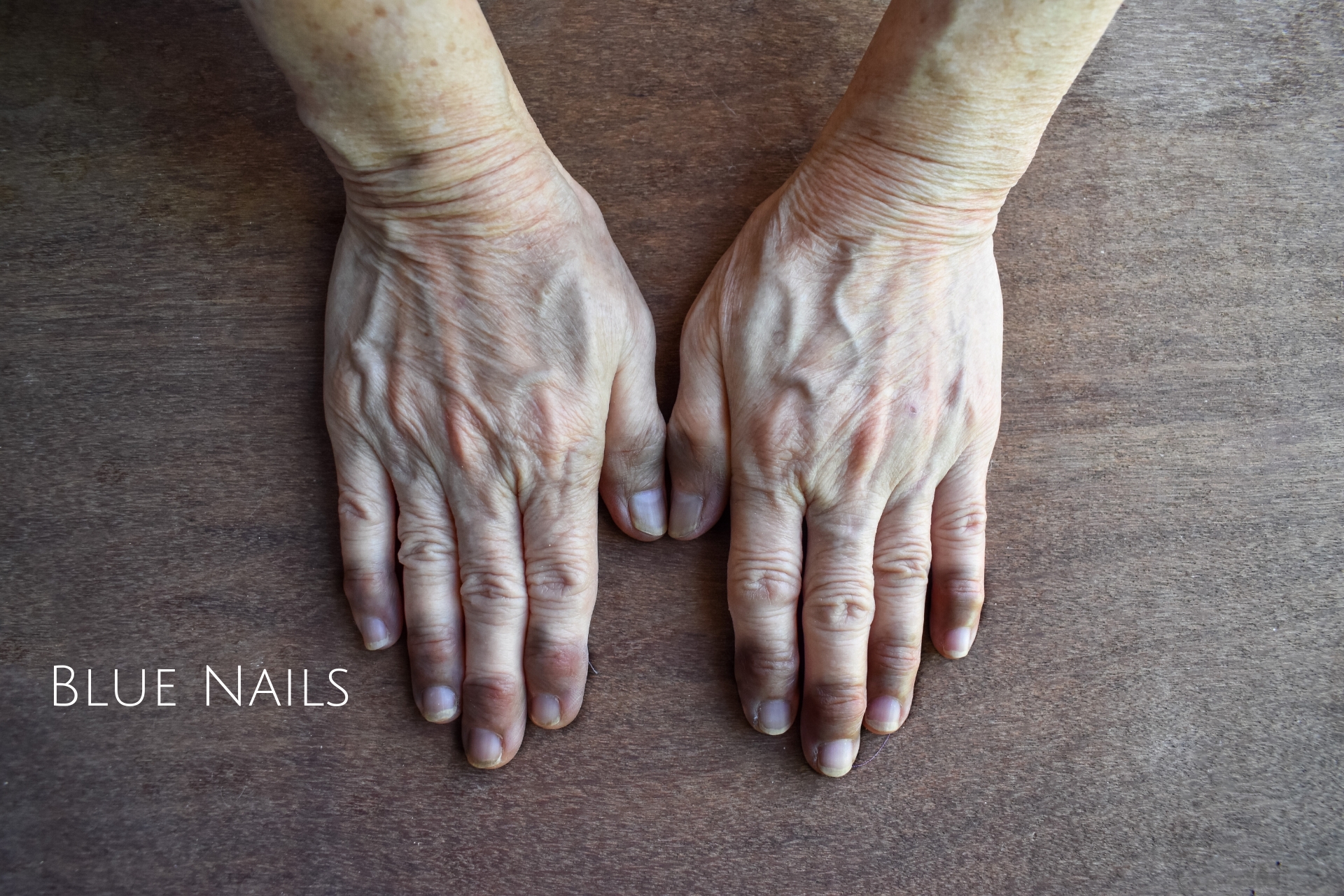
Blue nails, also known as cyanosis, are a condition characterized by a bluish discoloration of the fingernails or toenails. This discoloration occurs due to a lack of oxygen in the blood that reaches the fingertips or toes.
Causes of blue nails:
Cold temperatures: Exposure to cold temperatures can cause temporary cyanosis due to vasoconstriction, which is the narrowing of blood vessels. This reduces blood flow to the extremities, leading to a bluish appearance of the nails.
Low oxygen levels: Low oxygen levels in the blood, known as hypoxia, can also cause cyanosis.
Raynaud's phenomenon: Raynaud's phenomenon is a condition characterized by excessive vasoconstriction in response to cold temperatures or emotional stress.
Mehemoglobinemia: Mehemoglobinemia is a rare condition in which hemoglobin, the oxygen-carrying protein in red blood cells, is unable to release oxygen properly. This can lead to cyanosis, even when oxygen levels in the blood are normal.
Nail Texture and Thickness:
Brittle or Split Nails:

Brittle or split nails can be indicative of various factors affecting nail health. Some potential causes of brittle or split nails include:
Dehydration: Insufficient hydration can lead to dry and brittle nails. It's essential to stay well-hydrated for overall nail and skin health.
Excessive Exposure to Water: Frequent contact with water, especially hot water, and the use of harsh detergents without proper protection can strip the nails of moisture, leading to brittleness.
Age: Nails tend to become more brittle as individuals age.
Pitted Nails:
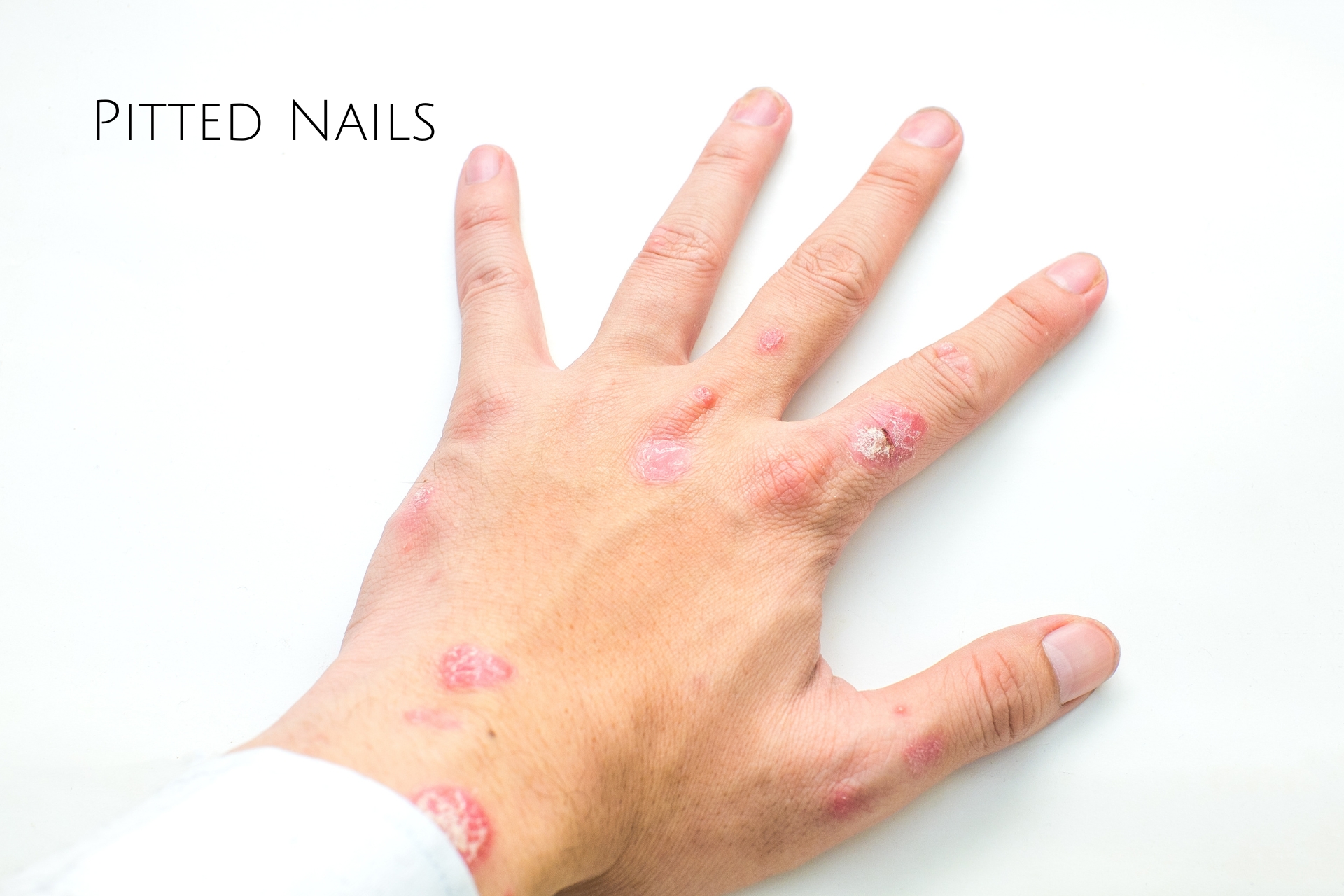
Pitted nails exhibit small dents or depressions on the nail surface, and this characteristic can be associated with various underlying health conditions. Some potential causes of pitted nails include:
Psoriasis: Pitting is a common feature of psoriasis, an autoimmune skin condition. Psoriasis can affect the nails, leading to changes in their appearance.
Eczema: Chronic eczema, particularly on the fingers, can contribute to pitted nails.
Alopecia Areata: This autoimmune condition, which causes hair loss, can also impact the nails and result in pitting.
Connective Tissue Disorders: Conditions like systemic lupus erythematosus (SLE) and rheumatoid arthritis may be associated with pitted nails.
Reactive Arthritis: Inflammation, especially in the joints, can affect the health of the nails and lead to pitting.
Inflammatory Bowel Disease (IBD): Conditions like Crohn's disease and ulcerative colitis, which fall under the umbrella of IBD, can be associated with nail changes, including pitting.
Spoon-shaped Nails:
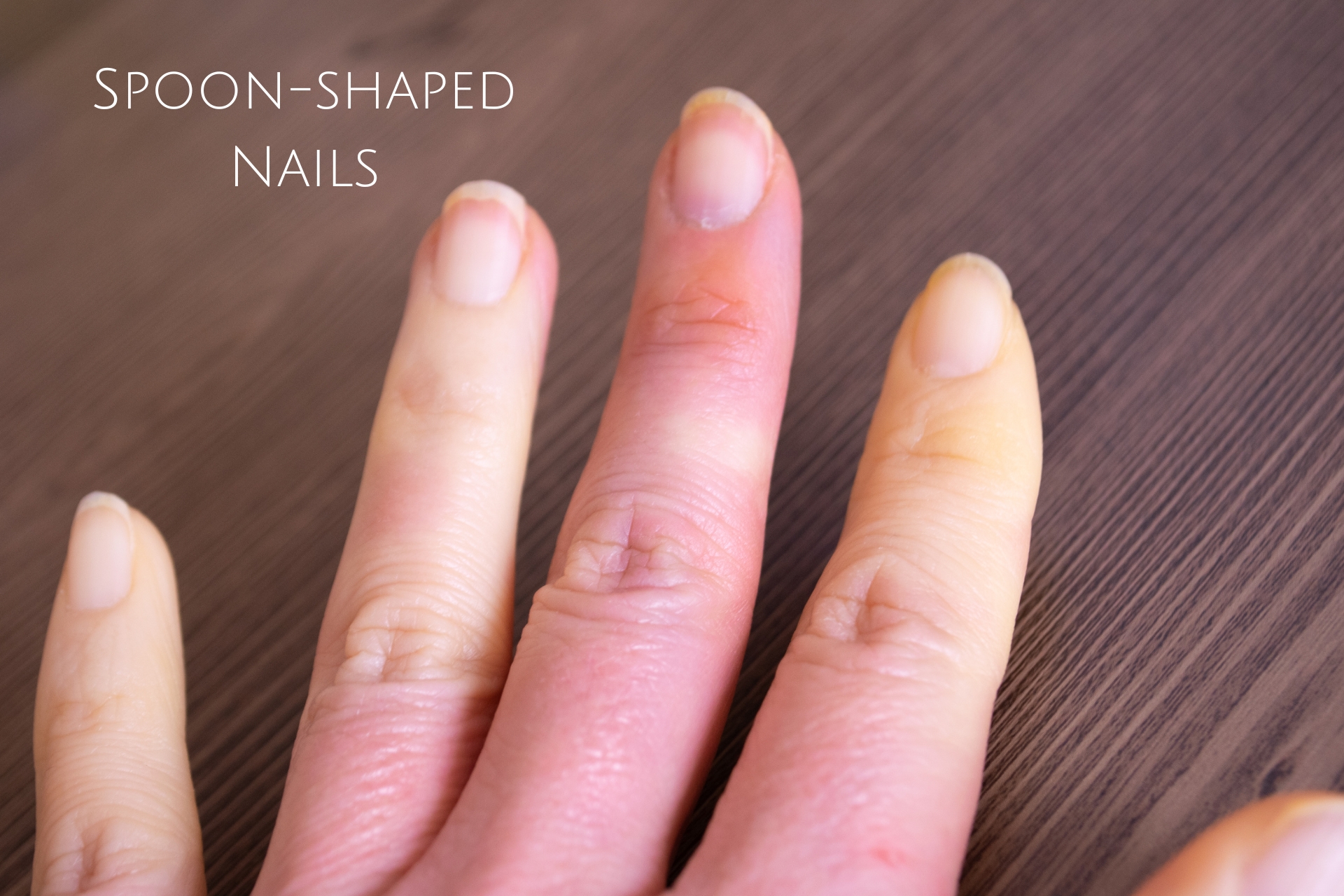
Spoon-shaped nails, a condition known as koilonychia, exhibit a concave or scooped-out appearance, often with raised edges. This nail abnormality can be associated with various underlying health conditions. Some potential causes of spoon-shaped nails include:
Iron-Deficiency Anemia: One of the most common causes of koilonychia is a lack of iron in the body. Iron is essential for the formation of hemoglobin, and its deficiency can affect the shape and structure of the nails.
Hemochromatosis: A genetic disorder that leads to excess iron absorption, hemochromatosis can cause spoon-shaped nails.
Raynaud's Disease: This condition, characterized by restricted blood flow to certain areas of the body, may affect the nails and lead to changes in their shape.
Systemic Lupus Erythematosus (SLE): Autoimmune diseases like lupus can impact the nails, resulting in koilonychia.
Thyroid Disorders: Both hypothyroidism and hyperthyroidism can contribute to changes in nail health, including the development of spoon-shaped nails.
Injury or Trauma: Persistent trauma or injury to the nails, such as constant tapping or crushing, can lead to changes in nail structure.
Nail Growth Patterns:
Slow Growth:
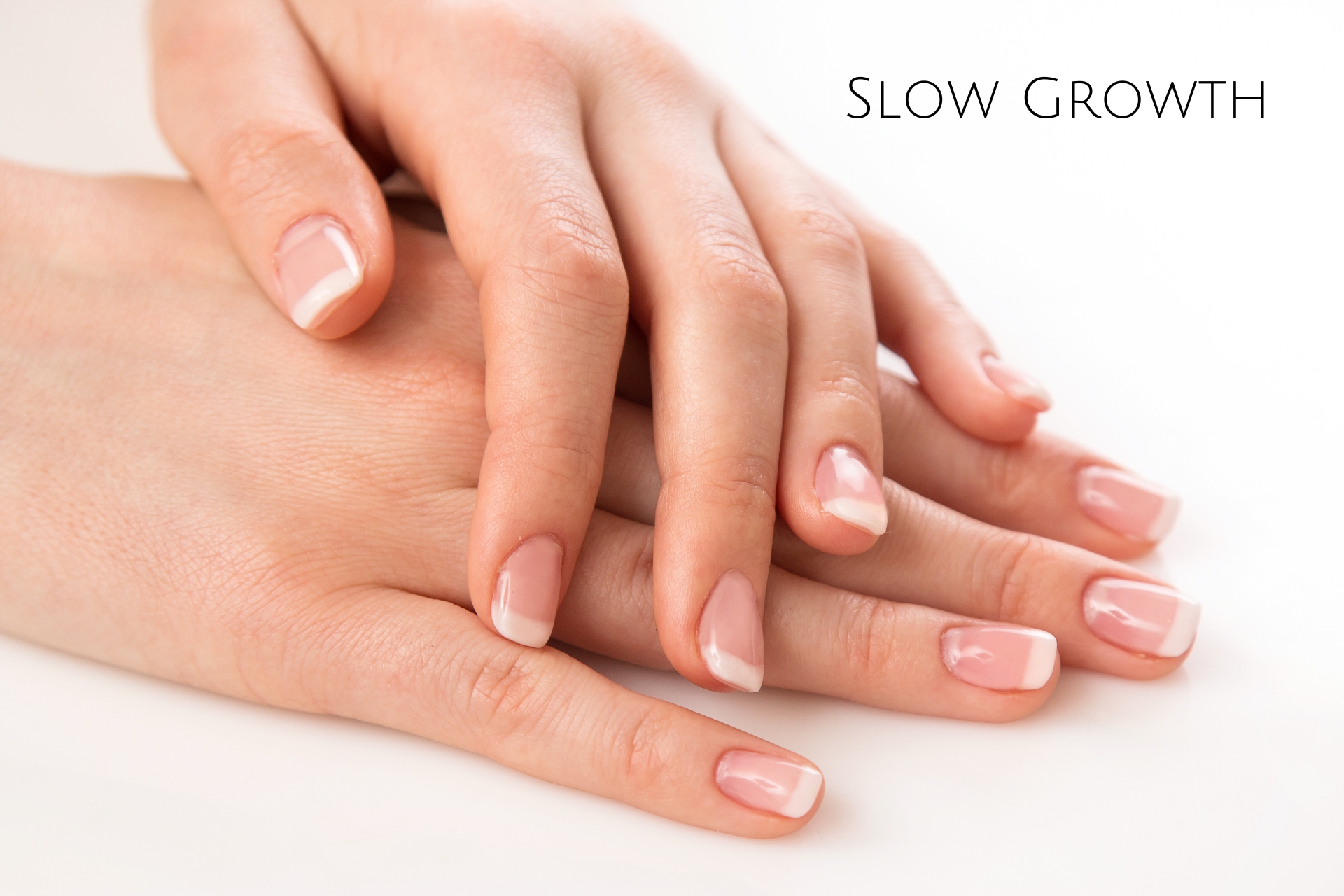
Slow nail growth can be influenced by various factors, and understanding these patterns may provide insights into overall health. Some potential causes of slow nail growth include:
Aging: As individuals age, the rate of nail growth tends to slow down naturally.
Hormonal Changes: Hormonal fluctuations, especially during pregnancy or menopause, can impact nail growth.
Medical Conditions: Certain health conditions, including thyroid disorders, anemia, and autoimmune diseases, can contribute to slow nail growth.
Medications: Some medications, such as chemotherapy drugs, can affect the rate of nail growth.
Clubbing:
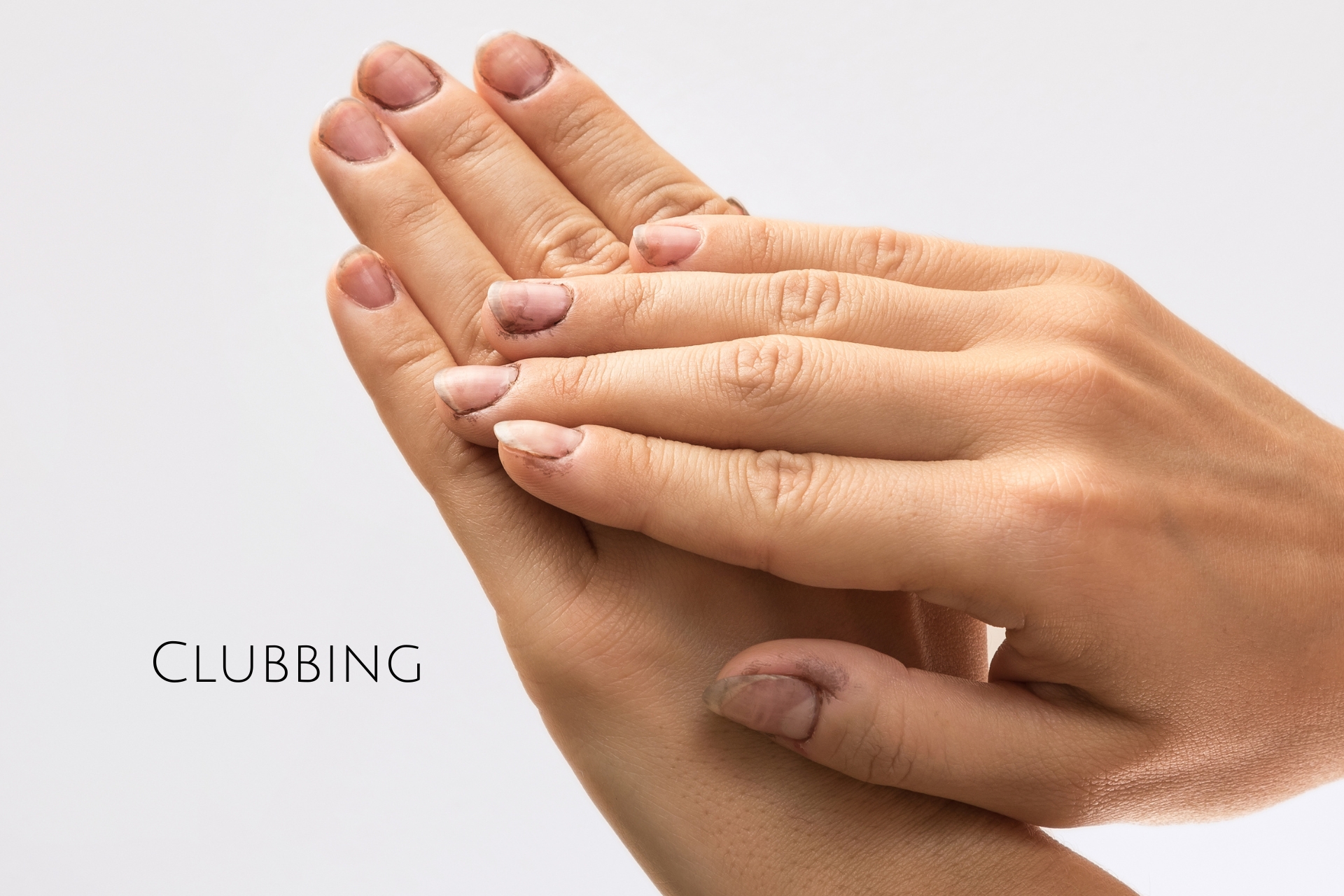
Nail clubbing is a condition characterized by changes in the shape and appearance of the nails, particularly the fingertips. It involves the enlargement and rounding of the fingertips and nails. This condition may be associated with various underlying health issues. Some potential causes of nail clubbing include:
Respiratory Conditions: Chronic respiratory diseases, such as chronic obstructive pulmonary disease (COPD), bronchiectasis, or lung cancer, can be linked to nail clubbing.
Cardiovascular Diseases: Certain heart and circulatory conditions, including congenital heart defects and subacute bacterial endocarditis, may cause nail clubbing.
Inflammatory Bowel Disease (IBD): Conditions like Crohn's disease and ulcerative colitis, which fall under the umbrella of IBD, can be associated with nail clubbing.
Liver Diseases: Advanced liver diseases, including cirrhosis and hepatocellular carcinoma, may cause changes in the nails, including clubbing.
Thyroid Disorders: Hyperthyroidism, hypothyroidism, or other thyroid abnormalities can contribute to nail clubbing.
In conclusion, the condition of your nails can serve as a valuable indicator of your overall health. Various factors, including nutritional status, underlying medical conditions, and lifestyle habits, can influence the appearance and health of your nails. Paying attention to changes such as discoloration, texture, and growth patterns can offer insights into potential health issues. However, it's essential to approach nail observations with a holistic perspective and consider other symptoms and factors.
Recent Posts
-
Power Up Your Performance: Unleashing the Strength of Protein
Introduction:Whether you're an athlete pushing your physical limits or someone striving for an activ
-
Brush buddies:Finding the perfect tool for the job
Introduction:In the mesmerizing world of makeup, the unsung heroes are often the brushes that effort
-
Can You Wear Makeup Over Sunscreen?
Introduction:The age-old debate on whether you can wear makeup over sunscreen is one that often





